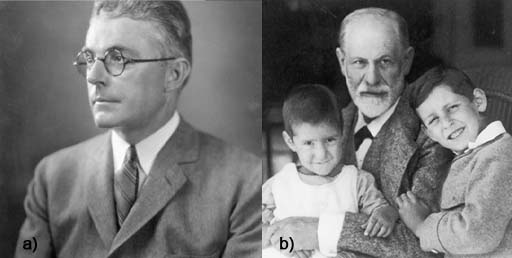3 How has the concept of mental health evolved?
The history of ideas about mental health is not, as many people expect, a straightforward journey of progression where things steadily improve, and we understand more about how to treat mental illness. Ideas about the nature, causes and best ways of treating or responding to mental health problems have changed significantly over time, influenced by a variety of factors, including the social and cultural context.
Activity 5: What causes mental health problems in adolescence?
What do you think causes mental health problems in young people? Spend a few minutes jotting down your thoughts below.
Now, go to the poll and select a possible cause that is closest to the one you have written.
Discussion
A review of research worldwide conducted after 2010 (Choudhry, 2016) found that people’s beliefs about the causes of mental health problems fell into three broad categories:
- Stress from social pressures and life events
- Supernatural and spiritual reasons
- Biomedical, including genetics (anything to do with how the body works)
The media have popularised the idea of young people being ‘snowflakes’, dubbed ‘emotionally weak and lacking resilience’ although academic Shelley Haslam-Ormerod (2019) claims this is unfair and insulting ‘because it encourages stigma and evokes hatred’.
Before the 20th century, people commonly believed that mental illness was caused by supernatural forces. Correspondingly, treatment, often involving physical restraint, was based on religious or superstitious reasoning (Jutras, 2017). Since then, debates about the role of biological versus psychological factors in causing mental illness have dominated, as you will see next.
In the psychology camp, Sigmund Freud (1856–1939) pioneered psychodynamics, a theory about how the mind works based on the idea that mental illness resulted from unresolved unconscious issues arising in childhood. Treatment involved encouraging the patient to talk about past events.
By contrast, the behaviourist viewpoint (initiated by John Watson (1878–1958)) assumed that people became ‘conditioned’ to display certain maladaptive behaviours. The proposed solution was further conditioning by applying rewards and punishments to encourage the desired behaviour, partly supported by the well-known dog experiments conducted by the Russian physiologist Ivan Pavlov (1849–1936). In these experiments it was discovered that the dogs could be ‘conditioned’ to salivate even when food was not present by other stimuli that were associated with the food such as the ringing of a bell.
The modern bio-medical perspective views mental health problems from an illness perspective, identifying inherited genes, hormonal changes and alterations in how the brain works as underlying a range of ‘mental illnesses’. Treatment involves medicines that act on the way the brain works, as well as lifestyle advice based on knowledge of the links between brain health and body health. Immense efforts continue in research laboratories to understand and treat the possible biological foundations of mental health problems. Modern psychological perspectives assume that people can be supported to think differently about challenges to their mental health and learn to manage them with or without the support of medicines.
You will learn more about the modern approaches in sessions 4 and 8, but next, you consider some of the cultural aspects of mental health.


